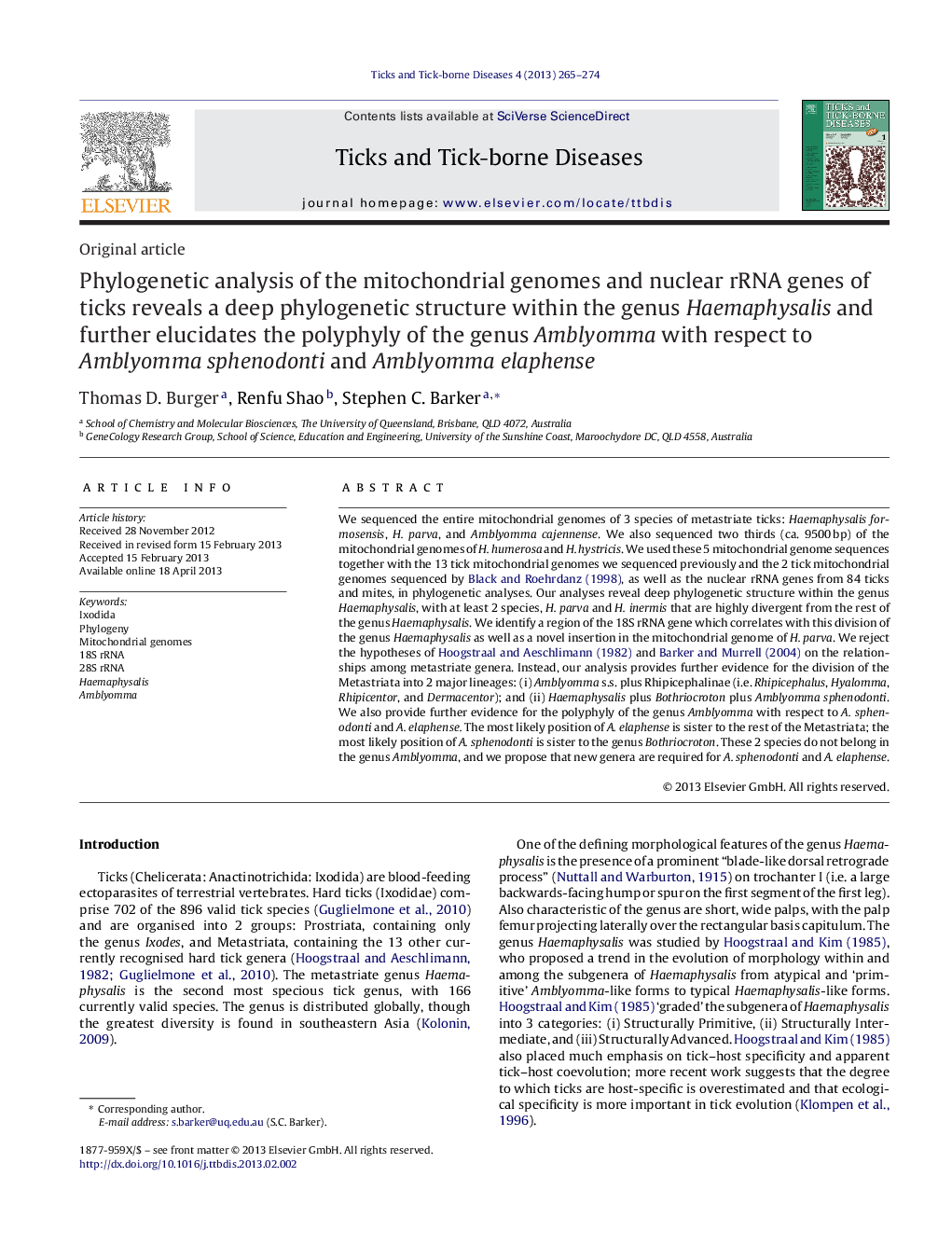| Article ID | Journal | Published Year | Pages | File Type |
|---|---|---|---|---|
| 2474097 | Ticks and Tick-borne Diseases | 2013 | 10 Pages |
We sequenced the entire mitochondrial genomes of 3 species of metastriate ticks: Haemaphysalis formosensis, H. parva, and Amblyomma cajennense. We also sequenced two thirds (ca. 9500 bp) of the mitochondrial genomes of H. humerosa and H. hystricis. We used these 5 mitochondrial genome sequences together with the 13 tick mitochondrial genomes we sequenced previously and the 2 tick mitochondrial genomes sequenced by Black and Roehrdanz (1998), as well as the nuclear rRNA genes from 84 ticks and mites, in phylogenetic analyses. Our analyses reveal deep phylogenetic structure within the genus Haemaphysalis, with at least 2 species, H. parva and H. inermis that are highly divergent from the rest of the genus Haemaphysalis. We identify a region of the 18S rRNA gene which correlates with this division of the genus Haemaphysalis as well as a novel insertion in the mitochondrial genome of H. parva. We reject the hypotheses of Hoogstraal and Aeschlimann (1982) and Barker and Murrell (2004) on the relationships among metastriate genera. Instead, our analysis provides further evidence for the division of the Metastriata into 2 major lineages: (i) Amblyomma s.s. plus Rhipicephalinae (i.e. Rhipicephalus, Hyalomma, Rhipicentor, and Dermacentor); and (ii) Haemaphysalis plus Bothriocroton plus Amblyomma sphenodonti. We also provide further evidence for the polyphyly of the genus Amblyomma with respect to A. sphenodonti and A. elaphense. The most likely position of A. elaphense is sister to the rest of the Metastriata; the most likely position of A. sphenodonti is sister to the genus Bothriocroton. These 2 species do not belong in the genus Amblyomma, and we propose that new genera are required for A. sphenodonti and A. elaphense.
